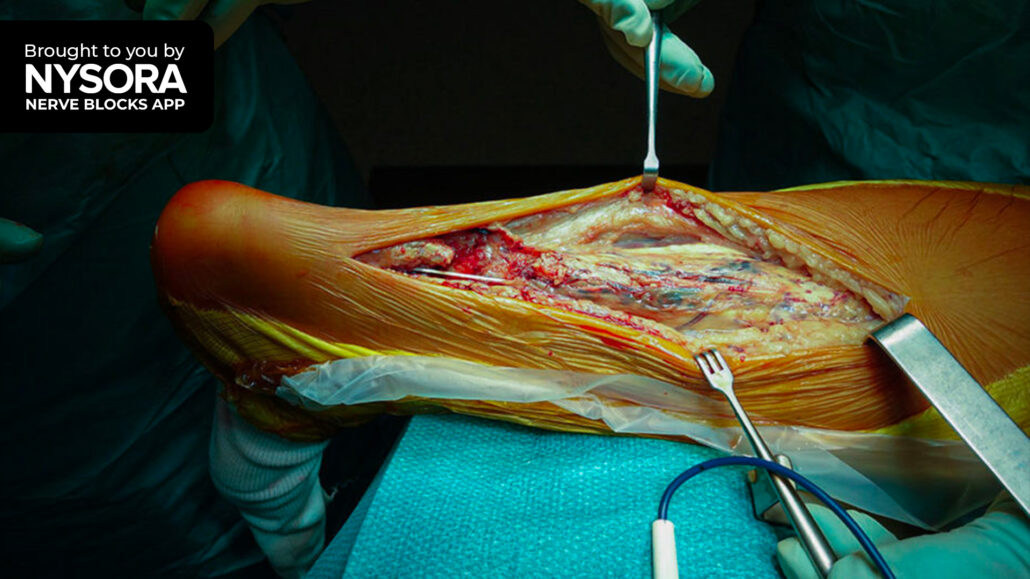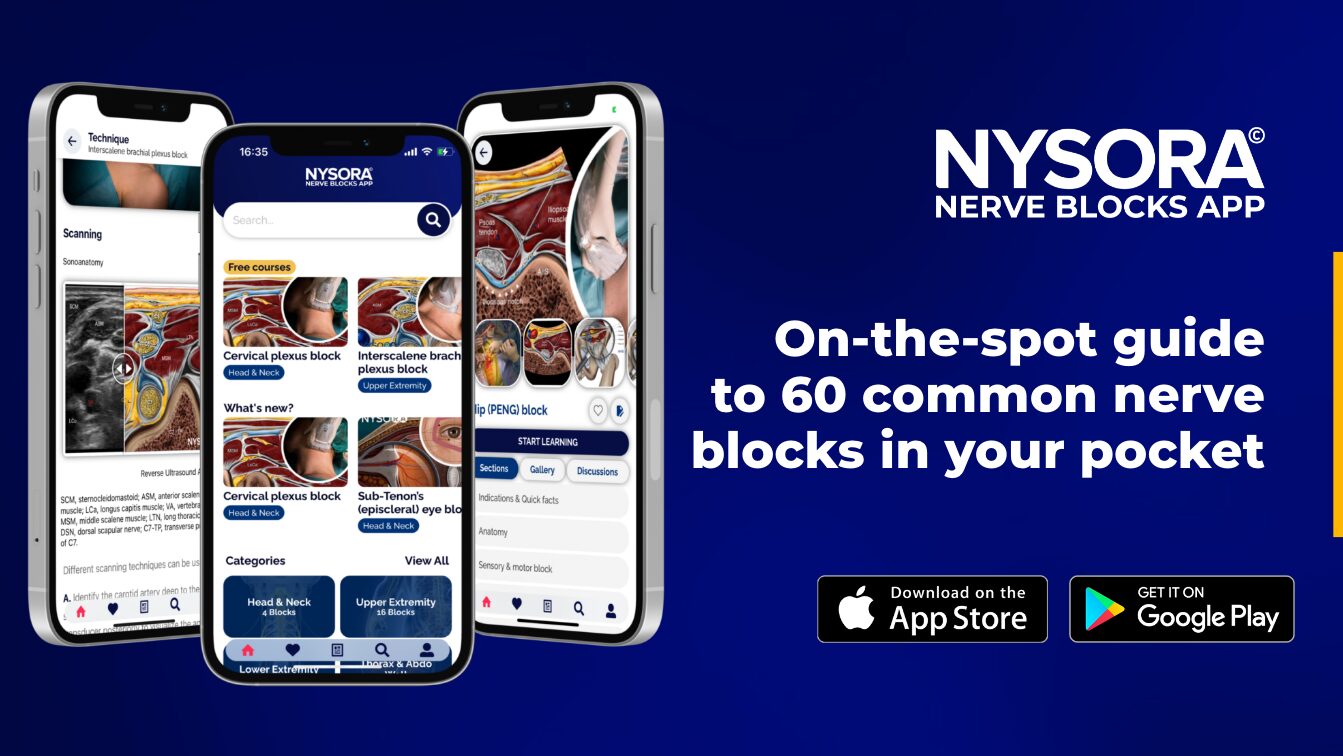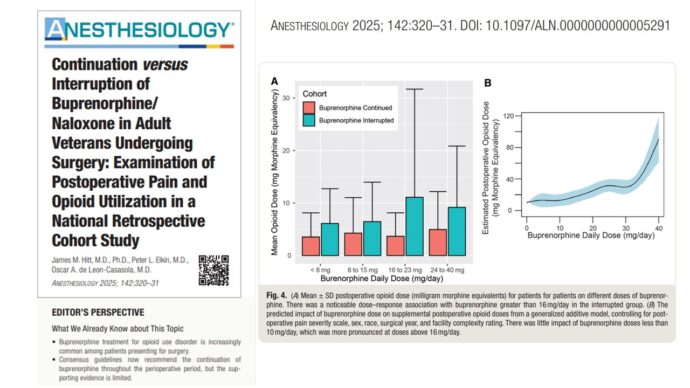
Case study: Achilles tendon repair
Case presentation
A 44-year-old male patient presented with a history of a sports-related Achilles tendon tear. This injury resulted in significant pain, limited mobility, and interference with his daily activities. The decision was made to proceed with Achilles tendon repair surgery to restore tendon function and alleviate the patient’s discomfort.
Nerve block techniques
To ensure effective regional anesthesia and optimize patient comfort during the Achilles tendon repair surgery, the following nerve block techniques were utilized:
- Popliteal sciatic nerve block: A single injection of 20 mL of 0.5% ropivacaine was administered into the sciatic nerve sheath located in the popliteal fossa. This technique aimed to provide comprehensive anesthesia to the posterior aspect of the leg, including the surgical site. By specifically targeting the sciatic nerve, the popliteal block successfully blocked pain transmission from the surgical area.
- Femoral nerve block: Considering the application of a leg tourniquet during the procedure, a supplementary femoral nerve block was performed to enhance patient comfort further. A 10 mL injection of 2% lidocaine was administered to provide a sensory block in the anterior and medial thigh region. The femoral nerve block contributed to a more comfortable surgical experience for the patient.
Patient outcome
Combining the popliteal and femoral nerve blocks resulted in effective anesthesia for the Achilles tendon repair surgery. The patient experienced minimal pain and discomfort during the recovery period, demonstrating the success of the nerve block techniques in alleviating pain. The surgical repair was successful, and the patient’s mobility and quality of life gradually improved as the healing process continued.
Why use a double block?
Regional anesthesia, such as ankle and sciatic nerve blocks, is frequently used in foot and ankle surgeries. However, a single sciatic block may not provide complete coverage if the surgery extends beyond the midfoot or involves both medial and lateral incisions. In such cases, a double block, incorporating both the femoral and sciatic nerve blocks, offers more comprehensive anesthesia.
- Improved Coverage: The sciatic nerve provides sensation to the posterior and lateral aspects of the leg and foot, while the femoral nerve covers the anterior and medial regions. Together, they ensure full leg, foot, and ankle anesthesia.
- Better Postoperative Pain Control: The combination block has been shown to reduce opioid requirements post-surgery, providing effective pain relief with fewer side effects.
Materials and methods: how the blocks are performed
In the clinical study of Lee et al. 2014, two anesthesia methods were compared: the sciatic nerve block alone and the double block (sciatic and femoral). Both blocks were performed preoperatively to assess effectiveness during and after surgery.
The sciatic nerve, located in the posterior thigh, is responsible for innervating the posterior and lateral aspects of the leg and foot. The block procedure includes:
- Positioning: The patient is placed in a supine position with the knee of the affected limb flexed.
- Identification: Ultrasound guidance is used to visualize the sciatic nerve at the level of the midthigh.
- Injection: A local anesthetic (0.75% ropivacaine) is injected to block the nerve, ensuring sensory and motor block of the posterior and lateral leg.
The femoral nerve provides sensation to the anterior and medial aspects of the thigh and lower leg through its branches, including the saphenous nerve. The procedure involves:
- Positioning: The patient remains supine.
- Identification: Using ultrasound, the femoral nerve is located near the femoral artery just beneath the inguinal ligament.
- Injection: A similar anesthetic is used to block the nerve, ensuring that the anterior and medial regions are anesthetized.
Results: Efficacy of double block vs. sciatic block alone
The study revealed several key findings regarding the efficacy of the double block:
- Onset of analgesia: The average time for anesthesia onset was comparable between the double block (63 minutes) and the sciatic block alone (61 minutes).
- Duration of analgesia: Both blocks provided long-lasting pain relief, with the double block lasting 12.0 hours and the sciatic block lasting 12.4 hours.
- Pain scores: During surgery, the average Visual Analog Scale (VAS) pain scores were low, with minimal differences between the two groups. The double block group showed slightly higher VAS scores postoperatively, but these differences were not clinically significant.
Key points
- Intraoperative pain: VAS scores during the operation were 0.35 for the double block group and 0.03 for the sciatic block group, showing effective anesthesia with minimal pain.
- Postoperative pain: At 2 hours, 1 day, and 2 days postoperatively, VAS scores for the double block group were slightly higher but within acceptable ranges, indicating effective pain management in both groups.
Benefits of double block anesthesia
The double block offers several advantages over sciatic block alone:
- Comprehensive sensory block: Since it covers both the medial and lateral aspects of the leg, the double block is more appropriate for surgeries that extend beyond the midfoot or involve medial incisions.
- Tourniquet usage: For surgeries requiring a thigh tourniquet, the double block ensures anesthesia in both the thigh and lower leg, providing better patient comfort.
- Patient satisfaction: High levels of patient satisfaction were recorded, with 28 out of 32 patients in the sciatic nerve block group and 23 out of 26 in the double block group expressing satisfaction.
Limitations and complications
While the double block was generally effective, it did present some limitations:
- Incomplete blocks: Seven patients in the double block group reported incomplete blocks, though only one patient experienced moderate pain.
- Motor blockade: The femoral nerve block can cause motor blockade in the quadriceps muscles, potentially impairing mobility temporarily. However, this was not a significant issue in this study.
Conclusion
The study suggests that double block anesthesia is a safe and effective option for hindfoot and ankle surgeries, particularly those involving both medial and lateral incisions or thigh tourniquets. It provides comprehensive coverage, reduces the need for opioid analgesics, and enhances patient comfort both during and after surgery.
As the demand for outpatient surgeries grows, the use of regional anesthesia techniques like the double block will likely increase, offering a viable alternative to general anesthesia for complex foot and ankle surgeries.
For more case studies like these and the complete guide to the 60 most frequently used nerve blocks, download the Nerve Blocks App HERE. Don’t miss the chance to get the bestselling NYSORA Nerve Blocks App also in book format – the perfect study companion with the Nerve Blocks app!




